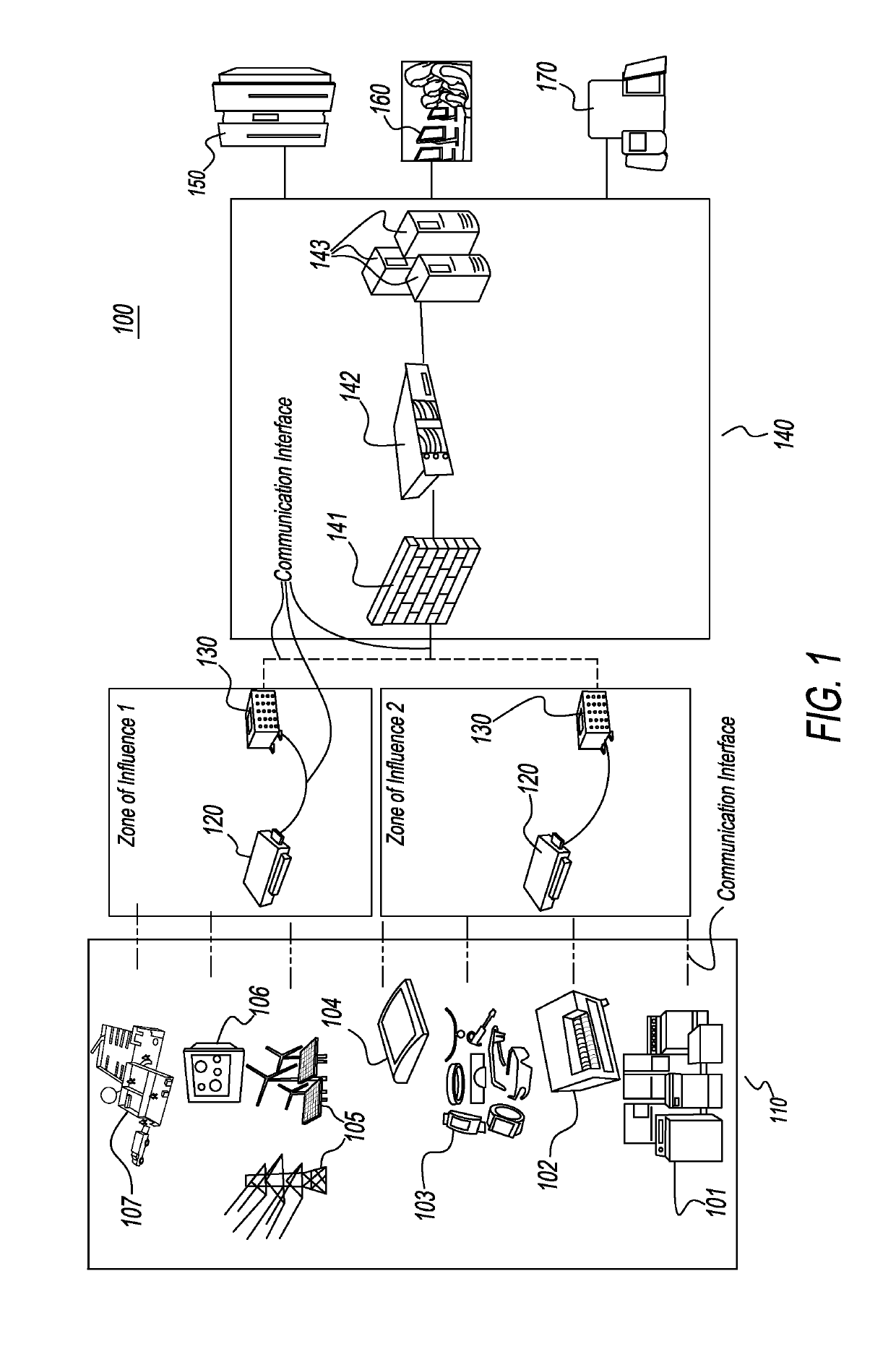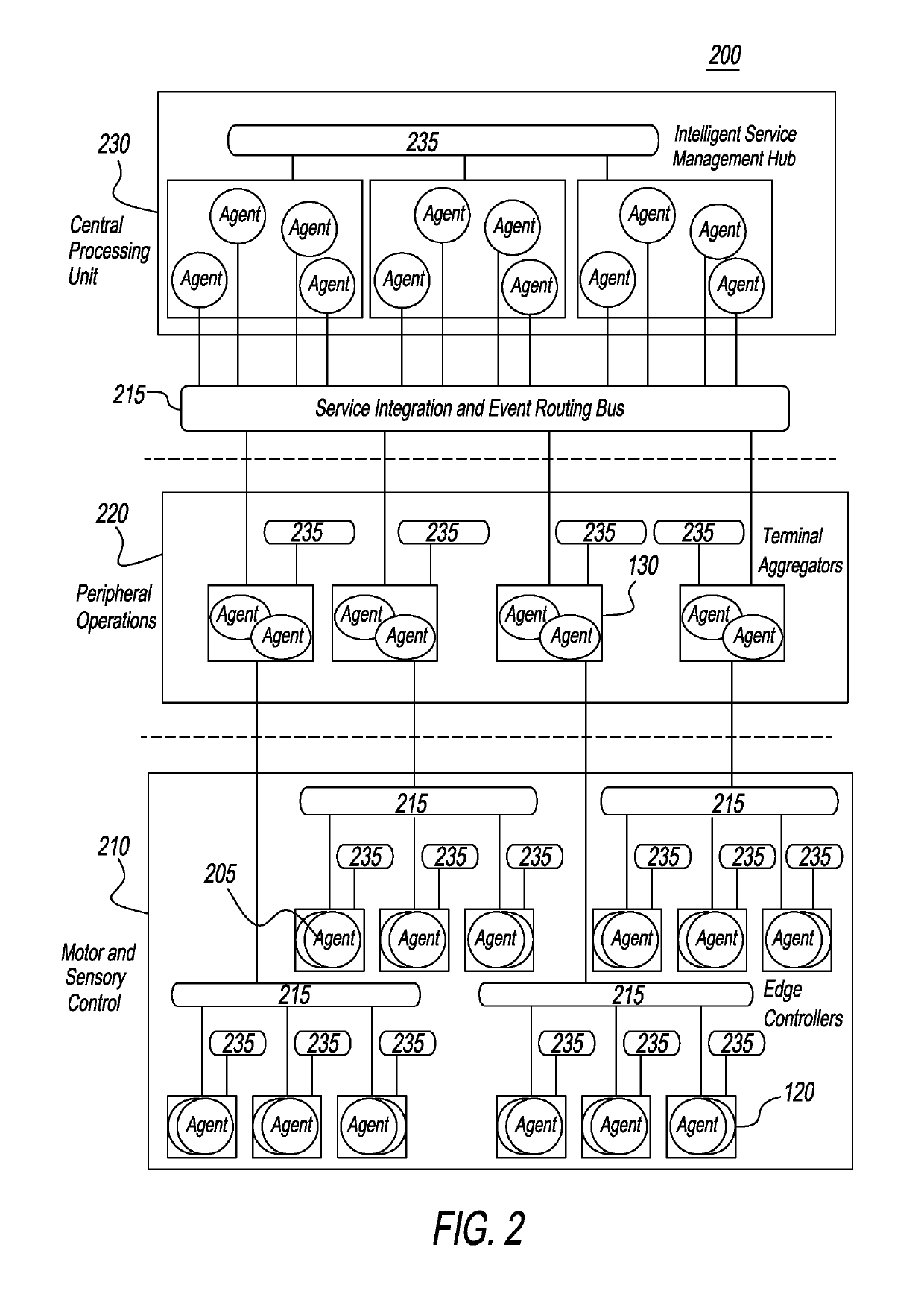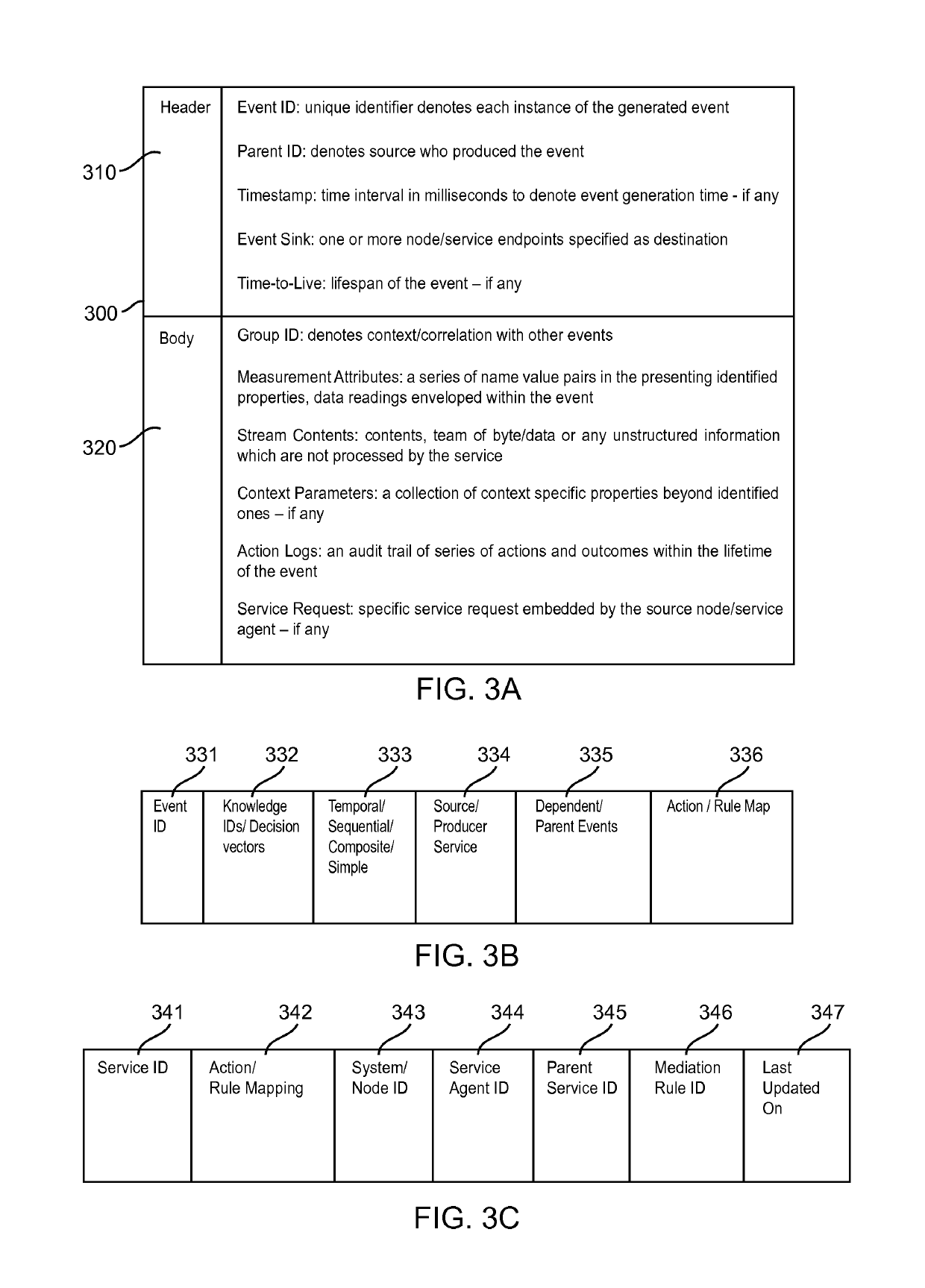Cognitive intelligence platform for distributed M2M/ IoT systems
a cognitive intelligence and distributed m2m technology, applied in the direction of network topologies, electrical appliances, machine-to-machine/machine-type communication services, etc., can solve the problems of limited ability to leverage machine intelligence and collaborative learning, and achieve the effects of improving operational autonomy, improving real-time execution, and facilitating collaboration
- Summary
- Abstract
- Description
- Claims
- Application Information
AI Technical Summary
Benefits of technology
Problems solved by technology
Method used
Image
Examples
Embodiment Construction
[0023]The following detailed description and accompanying drawings disclose various aspects and / or embodiments of the invention. Alternate aspects and / or embodiments may be devised without departing from the scope of the disclosure. Additionally, well-known elements of the disclosure are not described in detail or have been omitted so as not to obscure the relevant details of the disclosure.
[0024]The words “exemplary,”“e.g.,”“such as,” and / or “example” are used herein to mean “serving as an example, instance, or illustration.” Any aspect or embodiment described herein as “exemplary,”“e.g.,”“such as,” and / or “example” is not necessarily to be construed as preferred or advantageous over other aspects or embodiments. Likewise, the term “aspect / embodiment of the disclosure / invention” does not require that all aspects or embodiments include the discussed feature, advantage or mode of operation.
[0025]Further, many aspects and embodiments are described in terms of sequences of actions to b...
PUM
 Login to View More
Login to View More Abstract
Description
Claims
Application Information
 Login to View More
Login to View More - R&D
- Intellectual Property
- Life Sciences
- Materials
- Tech Scout
- Unparalleled Data Quality
- Higher Quality Content
- 60% Fewer Hallucinations
Browse by: Latest US Patents, China's latest patents, Technical Efficacy Thesaurus, Application Domain, Technology Topic, Popular Technical Reports.
© 2025 PatSnap. All rights reserved.Legal|Privacy policy|Modern Slavery Act Transparency Statement|Sitemap|About US| Contact US: help@patsnap.com



